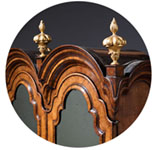18th Century German Equinoctial Pocket Sundial and Compass by Ludwig Theodor
SOLD
Request Information
Follow Us
18th Century German Equinoctial Pocket Sundial and Compass by Ludwig Theodor
From the first quarter of the 18th century – a German brass equinoctial pocket sundial by Ludwig Theodor Muller, Augsburg. The sundial consists of three parts: a richly engraved octagonally shaped gilt brass base, which holds a recessed compass with circular glass; a hinged silvered brass sector to adjust the latitude; and a hinged silvered hour ring with a sprung folding central gnomon to read the time. The sundial rests on three solid brass turned adjustable bun feet.
To position the instrument, use can be made of the compass, which has a silver centre with rose and radial lines engraved with Latin annotations (S for Septentriones (north), E for Emendor (magnetic declination), OR for Orientalis (east), M for Meridianus (south) and OC for Occidentalis, the four cardinal points. The underside of the compass is engraved with the following placenames and indications: Elev Poli, Lisbon 39; Rom 42; Venedig 45; Wien, Munch, Augsp. 4X; Nurnb, Regensp 49; Prag, Cracau 50; Leizig 51 over the monogram L.T.M, the initials of the maker. When the compass needle is directed to the north, the latitude can be adjusted on the sector on the basis of the observer’s position. The time can then be read by the shadow which the needle gnomon casts on the hinged open hour silvered circle pivoting against the folding curved latitude scale and engraved in reverse III-XII-IX with stylized wheatear half-hour markers.
The maker
Ludwig Theodor (or Ludovicus Theodatus) Müller was active a compass and sundial maker in Augsburg from circa 1710. He died in 1770.
Condition
Good. Wear consistent with age and use.
Dimensions
Height: 6 in. (15.24 cm)
Diameter: 6.5 in. (16.51 cm)
PREVIOUSLY SOLD
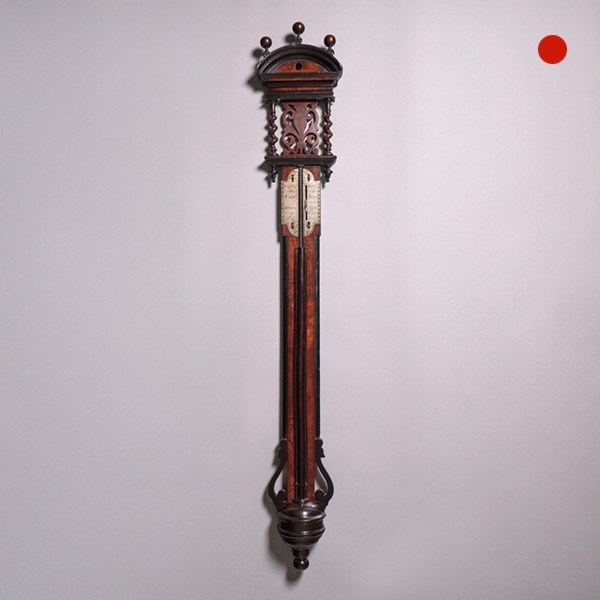
Rare Early 18th Century Queen Anne Walnut Stick Barometer, Circa 1705-1710
Rare Early 18th Century Queen Anne Walnut Stick Barometer, Circa 1705-1710 SoldFollow UsRare Early...

18th Century George II Tavern or Act of Parliament Clock, Circa 1740
18th Century George II Tavern or Act of Parliament Clock, Circa 1740 SoldFollow Us18th Century George II Antique Tavern Clock or Act of Parliament Clock, Circa 1740 Antique Tavern clock by Thomas Moore Ipswich A fine eighteenth-century tavern...

The 10.12ft 18th Century George I Bur/Burl Walnut Month Longcase Clock by James Markwick
The 10.5ft 18th Century George I Bur/Burl Walnut Month Longcase Clock by James Markwick Sold Follow UsThe 10.5ft 18th Century George I Bur/Burl Walnut Month Longcase Clock by James Markwick This is, without doubt, the largest and most...
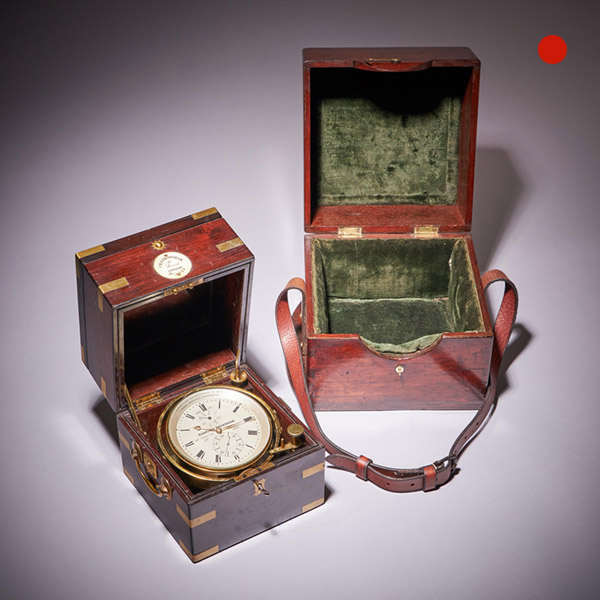
Fine Two-Day Marine Chronometer Signed Charles Frodsham
Fine Two-Day Marine Chronometer Signed Charles Frodsham SoldFollow UsFine Two-Day Marine...

Fine 19th-century French ormolu mantel clock (pendule) by Leroy a Paris, c. 1825
Fine 19th century French ormolu mantel clock (pendule) by Leroy a Paris, c. 1825 SoldFollow UsFine...
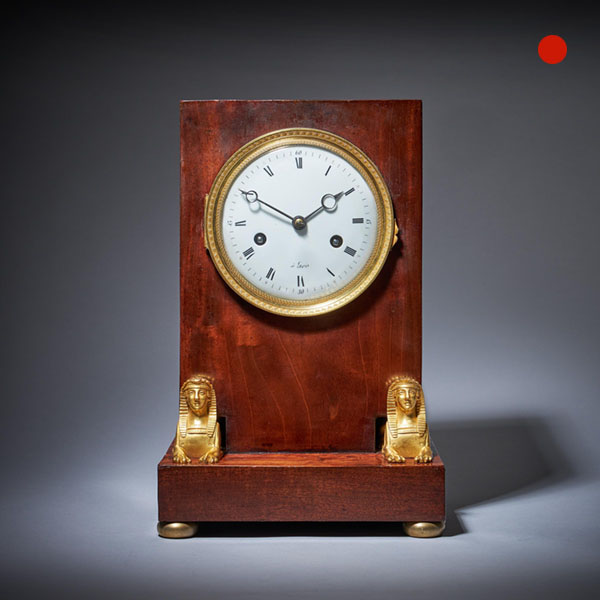
19th-Century French Flame Mahogany Napoleon Empire Period Mantel Clock
19th-Century French Flame Mahogany Napoleon Empire Period Mantel Clock Sold[wpforms_selector form_id="11387" show_title="on" _builder_version="4.22.1" _module_preset="default" custom_margin="-30px||||false|false"...

Rare Early 18th Century Queen Anne Walnut Stick Barometer, Circa 1705-1710
Rare Early 18th Century Queen Anne Walnut Stick Barometer, Circa 1705-1710 SoldFollow UsRare Early...

18th Century George II Tavern or Act of Parliament Clock, Circa 1740
18th Century George II Tavern or Act of Parliament Clock, Circa 1740 SoldFollow Us18th Century George II Antique Tavern Clock or Act of Parliament Clock, Circa 1740 Antique Tavern clock by Thomas Moore Ipswich A fine eighteenth-century tavern...

The 10.12ft 18th Century George I Bur/Burl Walnut Month Longcase Clock by James Markwick
The 10.5ft 18th Century George I Bur/Burl Walnut Month Longcase Clock by James Markwick Sold Follow UsThe 10.5ft 18th Century George I Bur/Burl Walnut Month Longcase Clock by James Markwick This is, without doubt, the largest and most...

Fine Two-Day Marine Chronometer Signed Charles Frodsham
Fine Two-Day Marine Chronometer Signed Charles Frodsham SoldFollow UsFine Two-Day Marine...

Fine 19th-century French ormolu mantel clock (pendule) by Leroy a Paris, c. 1825
Fine 19th century French ormolu mantel clock (pendule) by Leroy a Paris, c. 1825 SoldFollow UsFine...

19th-Century French Flame Mahogany Napoleon Empire Period Mantel Clock
19th-Century French Flame Mahogany Napoleon Empire Period Mantel Clock Sold[wpforms_selector form_id="11387" show_title="on" _builder_version="4.22.1" _module_preset="default" custom_margin="-30px||||false|false"...
YOU MAY ALSO LIKE
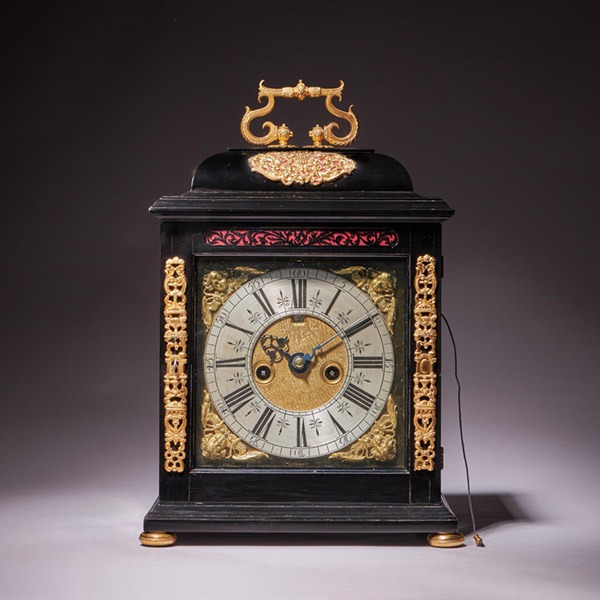
A 17th Century William and Mary eight-day table clock by Isaac Lowndes, 1695
A 17th-Century William and Mary eight-day table clock by Isaac Lowndes, 1695 £26,900Follow UsA...

A superb 19th century eight day grande sonnerie carriage clock, circa 1870.
A superb 19th century eight day grande sonnerie carriage clock, circa 1870. £3,950Follow UsA...

A Unique 18th Century Georgian Urn Clock by Paul Rimbault Soho London 1770
A Unique 18th Century Georgian Urn Clock by Paul Rimbault, Soho London, 1770 £34,900Follow UsA...
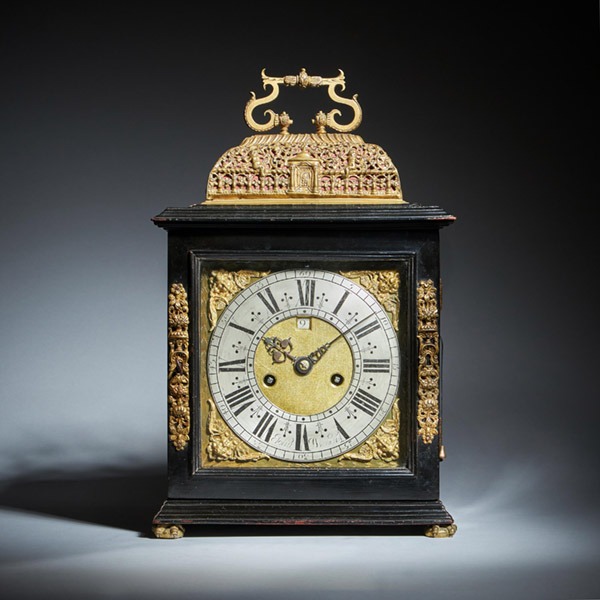
17th Century English eight-day spring-driven table clock by John Wrench
17th Century English eight-day spring-driven table clock by John Wrench £26,900Follow Us17th...
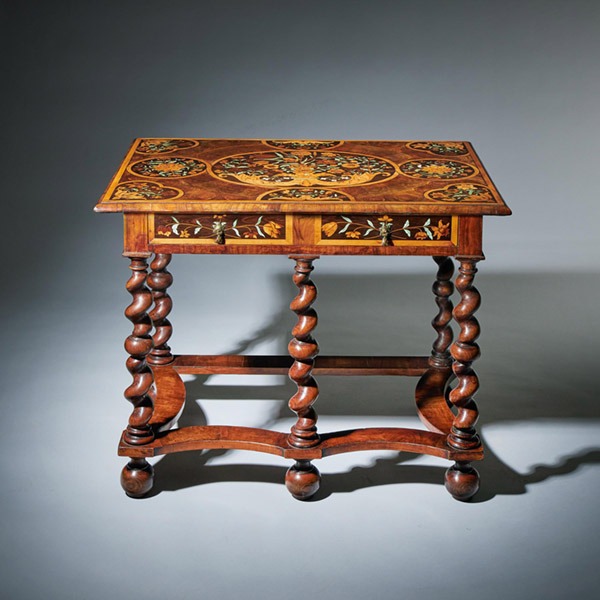
Highly Important 17th Century Charles II Floral Marquetry table by Gerrit Jensen
Highly Important 17th Century Charles II Floral Marquetry table by Gerrit Jensen £68,000Follow...

A 17th Century William and Mary eight-day double basket table clock by Asselin
A 17th Century William and Mary eight-day double basket table clock by Asselin £26,900Follow UsA...

A 17th Century William and Mary eight-day table clock by Isaac Lowndes, 1695
A 17th-Century William and Mary eight-day table clock by Isaac Lowndes, 1695 £26,900Follow UsA...

A superb 19th century eight day grande sonnerie carriage clock, circa 1870.
A superb 19th century eight day grande sonnerie carriage clock, circa 1870. £3,950Follow UsA...

A Unique 18th Century Georgian Urn Clock by Paul Rimbault Soho London 1770
A Unique 18th Century Georgian Urn Clock by Paul Rimbault, Soho London, 1770 £34,900Follow UsA...

17th Century English eight-day spring-driven table clock by John Wrench
17th Century English eight-day spring-driven table clock by John Wrench £26,900Follow Us17th...

Highly Important 17th Century Charles II Floral Marquetry table by Gerrit Jensen
Highly Important 17th Century Charles II Floral Marquetry table by Gerrit Jensen £68,000Follow...

A 17th Century William and Mary eight-day double basket table clock by Asselin
A 17th Century William and Mary eight-day double basket table clock by Asselin £26,900Follow UsA...
